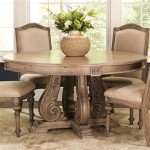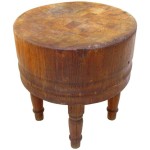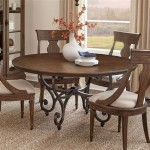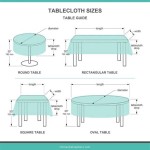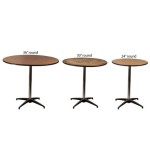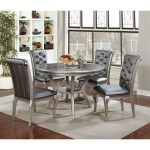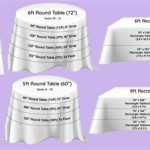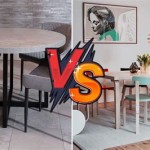Quilted Table Runners To Make: A Comprehensive Guide
Quilted table runners are a versatile and visually appealing addition to any home décor. They offer an opportunity to showcase quilting skills, add a touch of handmade artistry to dining or occasional tables, and provide a functional layer of protection against heat and spills. The process of creating a quilted table runner involves selecting fabrics, designing a pattern, piecing together the quilt top, layering it with batting and backing, and then quilting and binding the finished piece. The possibilities regarding design and technique are nearly endless, allowing crafters to create runners that suit any personal style or seasonal theme.
This article will explore different aspects of creating quilted table runners, providing a detailed overview of materials, techniques, and design considerations. It aims to provide a comprehensive resource for both beginner and experienced quilters looking to enhance their skills and create beautiful and functional table décor.
Fabric Selection and Preparation
The choice of fabric is paramount in determining the aesthetic and durability of a quilted table runner. Cotton fabrics are the most widely used choice due to their ease of handling, availability in a vast range of colors and prints, and their ability to withstand repeated washing. Pre-washed cotton is recommended to prevent shrinkage and color bleeding after the runner is completed. Different types of cotton fabrics, such as quilting cotton, batiks, and homespun, offer varying textures and visual effects.
Beyond cotton, quilters can also incorporate linen, wool, silk, and even repurposed clothing items into their table runner designs. Each of these materials presents unique challenges and opportunities. Linen offers a rustic and elegant texture, while wool provides warmth and can be felted for added dimension. Silk adds a luxurious sheen, but may require more careful handling during the quilting process. Repurposing fabrics from old clothing or household textiles can add a sentimental and eco-friendly element to the project.
Before beginning the cutting and piecing process, all fabrics should be properly prepared. This typically involves washing and ironing the fabrics to remove any sizing or wrinkles. Pre-washing is particularly crucial for fabrics with darker or more vibrant colors to prevent dye transfer during subsequent washes. Once the fabrics are clean and pressed, they are ready to be cut according to the chosen pattern.
When selecting fabric colors and patterns, it is important to consider the existing décor of the room where the table runner will be used. Complementary colors create a harmonious look, while contrasting colors can add a bold statement. The scale of the fabric prints should also be taken into account. Larger prints work well for larger pieces within the design, while smaller prints are suitable for smaller details or background fabrics.
Pattern Design and Piecing Techniques
The pattern design is the blueprint for the quilted table runner. A wide range of patterns are available, from simple geometric designs to intricate pictorial representations. Beginner quilters often start with simple patterns such as strip piecing, squares, or triangles, which require basic sewing skills and minimal fabric waste. More advanced quilters may opt for complex patterns such as log cabin, bargello, or appliqué designs, which demand greater precision and attention to detail.
Regardless of the chosen pattern, accurate cutting is essential for achieving a professional-looking result. A rotary cutter, cutting mat, and quilting ruler are invaluable tools for ensuring precise cuts. Accurate cutting translates to accurate piecing, which in turn leads to a flat and even quilt top.
Piecing the quilt top involves sewing the individual fabric pieces together according to the chosen pattern. A consistent seam allowance, typically ¼ inch, is crucial for maintaining the integrity of the design. Pinning the fabric pieces together before sewing helps prevent shifting and ensures accurate alignment. Pressing the seams open or to one side after each seam is sewn helps to reduce bulk and create a flatter surface.
Intricate patterns often require the use of specialized techniques such as paper piecing or foundation piecing. These techniques involve sewing the fabric pieces onto a paper or fabric foundation, providing stability and ensuring accurate angles and shapes. Appliqué, another common technique, involves attaching fabric shapes onto a background fabric using fusible web, machine stitching, or hand stitching. Appliqué can be used to create intricate designs or to add texture and dimension to the quilt top.
Consider the overall size and shape of the table when designing the runner. A general rule of thumb is that the runner should hang down approximately 6 to 12 inches on each end of the table. The width of the runner should be proportional to the width of the table. A narrow table runner may look lost on a large table, while a wide table runner may overwhelm a small table.
Quilting and Binding the Table Runner
Quilting is the process of stitching together the three layers of the quilt: the quilt top, the batting, and the backing. This process not only secures the layers together but also adds texture and visual interest to the finished piece. The quilting can be done by hand or by machine, using a variety of quilting designs.
Hand quilting involves using a needle and thread to create small, uniform stitches that penetrate all three layers of the quilt. This method is time-consuming but allows for greater control over the design and stitch placement. Machine quilting involves using a sewing machine to stitch the layers together. This method is faster and more efficient, but requires practice and skill to achieve a professional-looking result.
The choice of batting, the middle layer of the quilt, affects the weight, drape, and warmth of the finished piece. Cotton batting is a popular choice due to its breathability, affordability, and ease of handling. Polyester batting is lightweight and durable, but may not drape as well as cotton. Wool batting is warm and luxurious, but can be more expensive. Silk batting is lightweight and has a beautiful drape, but may require more careful handling.
The quilting design can be simple or complex, depending on the quilter's skill level and preferences. Simple quilting designs, such as straight lines or echoing the seams of the quilt top, are suitable for beginner quilters. More complex designs, such as free-motion quilting or intricate patterns, require greater skill and experience. Using a walking foot on the sewing machine helps to feed all three layers of the quilt evenly, preventing puckering and distortion.
Once the quilting is complete, the edges of the table runner are trimmed and squared up. Binding is the final step in the process, involving attaching fabric strips to the edges of the quilt to enclose the raw edges and create a finished look. Double-fold binding is the most common type of binding, providing a durable and professional finish.
Design Considerations: Color, Texture, and Theme
The overall design of a quilted table runner should reflect the quilter's personal style and complement the existing décor of the room. Color is a powerful tool for creating visual interest and setting the mood. Using a color palette that complements the surrounding furniture and accessories will create a cohesive and harmonious look.
Texture can be added to the table runner through the use of different fabrics, quilting designs, and embellishments. Fabrics with different textures, such as linen, velvet, or corduroy, can add depth and dimension to the design. Quilting designs, such as stippling or cross-hatching, can create texture and visual interest. Embellishments, such as buttons, beads, or ribbons, can add a touch of whimsy and personality.
Choosing a theme for the table runner can help to tie the design together and create a cohesive look. Seasonal themes, such as autumn leaves for fall or snowflakes for winter, are popular choices. Holiday themes, such as Christmas trees for Christmas or pumpkins for Halloween, can add a festive touch. Personal themes, such as flowers, animals, or geometric shapes, can reflect the quilter's interests and personality.
Consider the intended use of the table runner when designing the piece. A table runner that will be used for everyday meals should be durable and easy to clean. A table runner that will be used for special occasions can be more elaborate and decorative. Using a fabric protector spray can help to prevent stains and spills on the finished table runner.
Tools and Materials Required
Creating a quilted table runner requires a basic set of quilting tools and materials. The essential tools include a rotary cutter, cutting mat, quilting ruler, sewing machine, iron, and pins. The essential materials include fabric, batting, backing fabric, thread, and binding fabric.
A rotary cutter, cutting mat, and quilting ruler are essential for accurate cutting. A rotary cutter is a sharp, circular blade that is used to cut fabric quickly and easily. A cutting mat protects the work surface and provides a stable base for cutting. A quilting ruler is a clear plastic ruler with markings for measuring and cutting fabric accurately.
A sewing machine is used to piece the quilt top, quilt the layers together, and attach the binding. An iron is used to press the fabric and seams, creating a flat and even surface. Pins are used to hold the fabric pieces together during piecing and quilting.
Fabric is the primary material used in creating a quilted table runner. Batting is the middle layer of the quilt, providing warmth and loft. Backing fabric is the bottom layer of the quilt, providing a finished backing. Thread is used to sew the fabric pieces together and quilt the layers together. Binding fabric is used to enclose the raw edges of the quilt and create a finished look.
Additional tools and materials that may be helpful include a seam ripper, a needle threader, a thimble, a walking foot for the sewing machine, and a light box for tracing patterns.
Care and Maintenance of Quilted Table Runners
Proper care and maintenance will help to ensure that a quilted table runner lasts for many years. The specific care instructions will depend on the fabrics and batting used in the construction of the table runner. However, some general guidelines apply to most quilted table runners.
Most cotton quilted table runners can be machine washed in cold water on a gentle cycle. It is important to use a mild detergent and avoid using bleach, which can damage the fabric. The table runner should be tumble dried on low heat or air-dried to prevent shrinkage. Ironing the table runner after washing will help to remove any wrinkles.
Table runners made with delicate fabrics, such as silk or linen, may require hand washing or dry cleaning. Read the care instructions on the fabric label carefully before washing the table runner. Avoid using harsh chemicals or detergents, which can damage the delicate fabrics.
To prevent fading, store the table runner in a cool, dark place away from direct sunlight. Avoid storing the table runner in a damp or humid environment, which can cause mildew or mold to grow. Periodically inspect the table runner for any signs of wear or damage. Repair any loose seams or tears promptly to prevent further damage.
Consider using a fabric protector spray to protect the table runner from stains and spills. This spray will create a barrier on the fabric, making it easier to clean up any spills before they soak into the fabric. Blot up any spills immediately with a clean cloth to prevent staining. Avoid rubbing the spill, which can spread the stain.

Nordic Star Table Runner Free Pattern The Crafty Quilter

How To Make A Quick And Easy Table Runner With Strips Quilting

How To Make A Simple Table Runner The Stitching Scientist Pattern

Table Runner Patterns To Quilt Easy Crochet Free Quilted Runners Pattern

How To Make A Table Runner An Easy Step By Guide Quilting Life

Quick Easy Table Runners Quilt Pattern

Modern Quilted Table Runner

Easy Quilt Patterns Scrappy Table Runner Pattern For Charm Packs Fall Beginner Quilting

25 Free Table Runner Patterns To Lift Your Mood O Sewing

15 Free Quilted Table Runner Patterns Quilting
Related Posts

